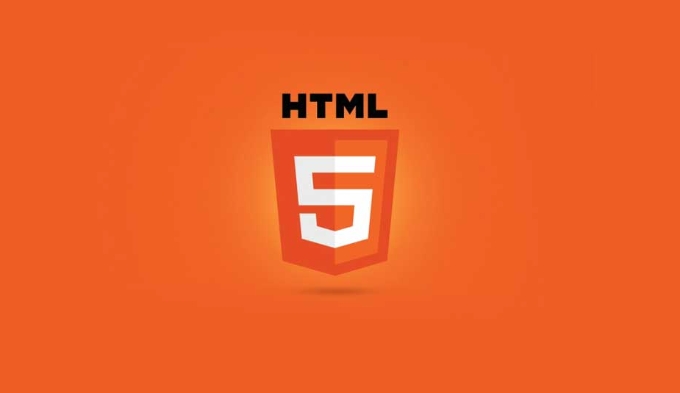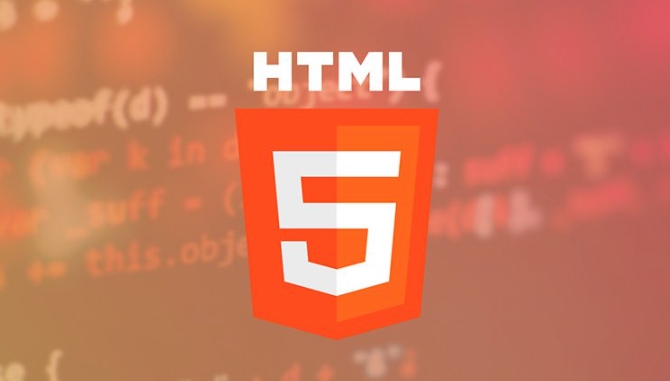Getting the user's current location with the HTML5 Geolocation API.
Jul 02, 2025 pm 05:03 PMWhen using the HTML5 Geolocation API to obtain user location, you must first obtain user authorization, and request and explain the purpose at the right time; the basic method is navigator.geolocation.getCurrentPosition(), which contains successful callbacks, wrong callbacks and configuration parameters; common reasons for failure include permission denied, browser not supported, network problems, etc., alternative solutions and clear prompts should be provided. The specific suggestions are as follows: 1. Request permissions when the user operation is triggered, such as clicking the button; 2. Use enableHighAccuracy, timeout, maximumAge and other parameters to optimize the positioning effect; 3. Error handling should distinguish different error codes and give corresponding prompts; 4. Provide alternative ways to manually enter the location to enhance the user experience.

Getting the user's current location is the basic feature of many modern web applications, such as weather forecasting, map navigation, or location-based services. The Geolocation API for HTML5 provides a simple and straightforward way to allow websites to request and obtain user geolocation information.

However, although this function is easy to use, it also has its limitations and precautions. Let’s take a look at how to use it correctly from a few practical perspectives.

Users must actively authorize access to locations
The Geolocation API is designed to require users to explicitly authorize. When you call navigator.geolocation.getCurrentPosition() , the browser will pop up a prompt box asking the user whether to allow the website to access their location.
If your website frequently requests targeting permissions, or suddenly requests without context, users may reject or even block your request. Therefore, it is recommended:

- Trigger a location request at the right time , such as a button like "Find a nearby store" or "Get current weather".
- First give a brief description to tell the user why location information is needed so that they are more willing to authorize.
Basic methods and parameters for obtaining locations
The Geolocation API provides several core methods, the most commonly used is getCurrentPosition() , which accepts three parameters:
navigator.geolocation.getCurrentPosition( successCallback, errorCallback, options );
-
successCallback: The callback function executed after successfully obtaining the position, including latitude and longitude and other information. -
errorCallback: executes if the user refuses or the device cannot get the location. -
options: Optional configuration items, such as whether high precision, timeout, and maximum cache time are enabled.
Common configurations are as follows:
-
enableHighAccuracy: true(enable GPS and other higher precision positioning methods) -
timeout: 10000(maximum time to wait for positioning, in milliseconds) -
maximumAge: 0(Setting to 0 means that the cache is not used)
Common causes and handling suggestions for failed location
Even if you call the API correctly, you may not be able to get the location data smoothly. Common causes of failure include:
- User rejected permission request
- The browser does not support the Geolocation API
- The device has no network connection or the GPS signal is weak
- Timeout or location service response slow
To enhance the user experience, you can do these things:
- Check if the browser supports it:
if ("geolocation" in navigator) - Give clear error prompts such as "Cannot get your location, please check the network or try again later"
- Provides alternatives to manually input locations
For example, in the error callback you can write this:
function errorCallback(error) {
switch(error.code) {
case error.PERMISSION_DENIED:
console.log("The user rejected the location request");
break;
case error.POSITION_UNAVAILABLE:
console.log("Location information is not available");
break;
case error.TIMEOUT:
console.log("Location timeout");
break;
default:
console.log("Unknown Error");
}
}Basically that's it. The Geolocation API is not complicated to use, but to make it work stably, it also needs to consider user authorization processes, error handling, and performance differences between different devices. As long as it is used reasonably, it is a very practical front-end tool.
The above is the detailed content of Getting the user's current location with the HTML5 Geolocation API.. For more information, please follow other related articles on the PHP Chinese website!

Hot AI Tools

Undress AI Tool
Undress images for free

Undresser.AI Undress
AI-powered app for creating realistic nude photos

AI Clothes Remover
Online AI tool for removing clothes from photos.

Clothoff.io
AI clothes remover

Video Face Swap
Swap faces in any video effortlessly with our completely free AI face swap tool!

Hot Article

Hot Tools

Notepad++7.3.1
Easy-to-use and free code editor

SublimeText3 Chinese version
Chinese version, very easy to use

Zend Studio 13.0.1
Powerful PHP integrated development environment

Dreamweaver CS6
Visual web development tools

SublimeText3 Mac version
God-level code editing software (SublimeText3)

Hot Topics
 Handling reconnections and errors with HTML5 Server-Sent Events.
Jul 03, 2025 am 02:28 AM
Handling reconnections and errors with HTML5 Server-Sent Events.
Jul 03, 2025 am 02:28 AM
When using HTML5SSE, the methods to deal with reconnection and errors include: 1. Understand the default reconnection mechanism. EventSource retrys 3 seconds after the connection is interrupted by default. You can customize the interval through the retry field; 2. Listen to the error event to deal with connection failure or parsing errors, distinguish error types and execute corresponding logic, such as network problems relying on automatic reconnection, server errors manually delay reconnection, and authentication failure refresh token; 3. Actively control the reconnection logic, such as manually closing and rebuilding the connection, setting the maximum number of retry times, combining navigator.onLine to judge network status to optimize the retry strategy. These measures can improve application stability and user experience.
 Integrating CSS and JavaScript effectively with HTML5 structure.
Jul 12, 2025 am 03:01 AM
Integrating CSS and JavaScript effectively with HTML5 structure.
Jul 12, 2025 am 03:01 AM
HTML5, CSS and JavaScript should be efficiently combined with semantic tags, reasonable loading order and decoupling design. 1. Use HTML5 semantic tags, such as improving structural clarity and maintainability, which is conducive to SEO and barrier-free access; 2. CSS should be placed in, use external files and split by module to avoid inline styles and delayed loading problems; 3. JavaScript is recommended to be introduced in front, and use defer or async to load asynchronously to avoid blocking rendering; 4. Reduce strong dependence between the three, drive behavior through data-* attributes and class name control status, and improve collaboration efficiency through unified naming specifications. These methods can effectively optimize page performance and collaborate with teams.
 How to control HTML5 video and audio playback using JavaScript?
Jun 24, 2025 am 12:38 AM
How to control HTML5 video and audio playback using JavaScript?
Jun 24, 2025 am 12:38 AM
To control HTML5 video and audio playback using JavaScript, master the following key operations to achieve basic control. 1. Start or pause play can be achieved through the .play() and .pause() methods, and it is recommended to trigger through user interaction to be compatible with mobile browsers; 2. Control the volume and set the value from 0 to 1 through the volume attribute, and switch by setting the muted attribute to true or false; 3. Jump to a specific time to play, you can use the currentTime attribute, which supports direct assignment or increase or decrease the current time, and it is recommended to add error handling; 4. Listen to the playback status changes can be achieved through events such as play, pause, ended and timeupdate.
 Receiving real-time data with HTML5 Server-Sent Events (SSE).
Jul 02, 2025 pm 04:46 PM
Receiving real-time data with HTML5 Server-Sent Events (SSE).
Jul 02, 2025 pm 04:46 PM
Server-SentEvents (SSE) is a lightweight solution provided by HTML5 to push real-time updates to the browser. It realizes one-way communication through long HTTP connections, which is suitable for stock market, notifications and other scenarios. Create EventSource instance and listen for messages when using: consteventSource=newEventSource('/stream'); eventSource.onmessage=function(event){console.log('Received message:',event.data);}; The server needs to set Content-Type to text/event
 Declaring the correct HTML5 doctype for modern pages.
Jul 03, 2025 am 02:35 AM
Declaring the correct HTML5 doctype for modern pages.
Jul 03, 2025 am 02:35 AM
Doctype is a statement that tells the browser which HTML standard to use to parse the page. Modern web pages only need to be written at the beginning of the HTML file. Its function is to ensure that the browser renders the page in standard mode rather than weird mode, and must be located on the first line, with no spaces or comments in front of it; there is only one correct way to write it, and it is not recommended to use old versions or other variants; other such as charset, viewport, etc. should be placed in part.
 What are the best practices for structuring an HTML5 document?
Jun 26, 2025 am 01:03 AM
What are the best practices for structuring an HTML5 document?
Jun 26, 2025 am 01:03 AM
To build standardized and clear HTML5 documents, the following best practices must be followed: 1. Use standard document type declarations; 2. Build a basic skeleton including three tags and pay attention to the character set, title and script location; 3. Use semantic tags such as , , to improve accessibility and SEO; 4. Reasonably nest the title levels to ensure that the structure is clear and there is only one per page. These steps help improve code quality, collaboration efficiency and user experience.
 Improving SEO with HTML5 semantic markup and Microdata.
Jul 03, 2025 am 01:16 AM
Improving SEO with HTML5 semantic markup and Microdata.
Jul 03, 2025 am 01:16 AM
Using HTML5 semantic tags and Microdata can improve SEO because it helps search engines better understand page structure and content meaning. 1. Use HTML5 semantic tags such as,,,, and to clarify the function of page blocks, which helps search engines establish a more accurate page model; 2. Add Microdata structured data to mark specific content, such as article author, release date, product price, etc., so that search engines can identify information types and use them for display of rich media summary; 3. Pay attention to the correct use of tags to avoid confusion, avoid duplicate tags, test the effectiveness of structured data, regularly update to adapt to changes in schema.org, and combine with other SEO means to optimize for long-term.
 Explaining the HTML5 `` vs `` elements.
Jul 12, 2025 am 03:09 AM
Explaining the HTML5 `` vs `` elements.
Jul 12, 2025 am 03:09 AM
It is a block-level element, suitable for layout; it is an inline element, suitable for wrapping text content. 1. Exclusively occupy a line, width, height and margins can be set, which are often used in structural layout; 2. No line breaks, the size is determined by the content, and is suitable for local text styles or dynamic operations; 3. When choosing, it should be judged based on whether the content needs independent space; 4. It cannot be nested and is not suitable for layout; 5. Priority is given to the use of semantic labels to improve structural clarity and accessibility.






